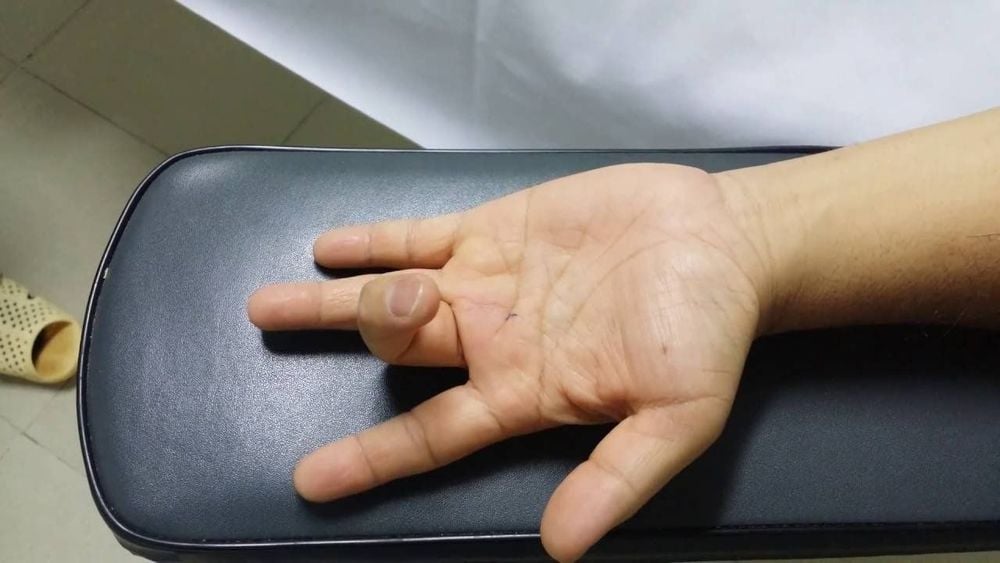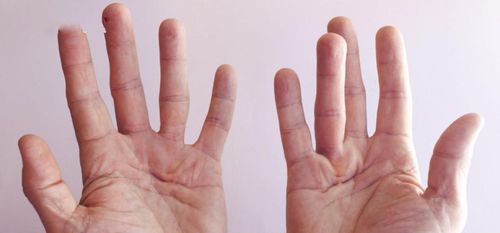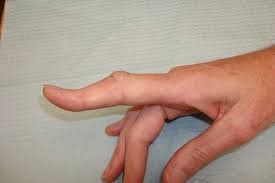This is an automatically translated article.
The article is professionally consulted by Master, Doctor Huynh Bao Toan - Department of Pediatrics - Neonatology - Vinmec Nha Trang International General Hospital.Trigger finger is a disease caused by inflammation of the ligaments that fix the flexor tendon of the finger. Progressive inflammation causes pain when flexing and extending these fingers, and movement is disrupted by a "pop" in a certain location of the finger, usually in the middle joint (proximal interphalangeal joint).
1. What is a trigger finger? The cause to the illness
Trigger finger, also known as trigger finger, is a disease that causes the finger to become stiff and fixed in one position. The disease mainly affects the layer of tissue around the finger tendons called the tendon sheath. Tendons are thick fibrous tissues that attach muscle to bone. Tendonitis results in the tendon not moving smoothly, causing the finger to lock in place.People of any age can get trigger finger, but it is more common in people over 45 years of age and more common in women than men. The disease is thought to be an occupational hazard for dentists, tailors and cattle butchers. In patients with some of the following diseases, there is also an increased incidence of trigger finger such as:
Diabetes Carpal tunnel syndrome De Quervain tendonitis Hypothyroidism Rheumatoid arthritis Gout Chronic kidney disease.

2. Trigger finger disease in children
When playing with children, or observing the hands of small children, parents find that their fingers are not moving smoothly, or are "stagnated" or worse, their fingers are not extended at all. Yes, the finger is always contracted in a position like the image of a "trigger". It is possible that the baby has had a trigger finger or a finger that pops, stuck in the tendon.Childhood trigger finger occurs when the flexor tendon with the tendon sheath and pulley is impeded. Usually in children it is the idiopathic appearance of thickened nodules on the transverse tendon at the metatarsal joint, which is different from the chronic inflammation of the tendon - tendon sheath in adults.
This pathology in children is usually detected in children from 3 months to 3 years old, usually occurs in the thumb (about 80%) and can be in both hands (about 25%). The parent is the person who directly discovers and is diagnosed after a follow-up visit from the doctor.
Pathology has 4 stages, in stages 3 and 4, finger movements are difficult, when the baby grasps objects, the finger does not return to the straightened position, parents have to open it, sometimes causing pain for baby.

3. Symptoms of trigger finger disease
The first common symptom is a slight painless pop of the finger or simply discomfort when moving the finger. As the disease progresses, there will be popping, popping sounds, and pain at the knuckles or proximal interphalangeal joints on the palm side.Trigger finger disease often has the following signs:
The finger is often fixed, stuck or locked in a flexed position when moving the finger. Someone needs to be straightened or bent back to the original position. Pain occurs in the tendon area and is often worse with movement. There may also be swelling. In adults, trigger finger usually affects the middle finger, while children often get it on the thumb. The disease is classified into 4 grades:
Grade 1: facial pain and discomfort in the pulley, finger flexor tendon. Level 2: finger entangled. Level 3: locked fingers, can only move passively. Level 4: locked fingers, unable to move. When experiencing the signs of trigger finger, it is best to see a hand surgeon who has experience in dealing with finger, wrist and hand problems. Hand surgeons are equipped with the knowledge and skills to handle all levels of trigger finger disease.

Please dial HOTLINE for more information or register for an appointment HERE. Download MyVinmec app to make appointments faster and to manage your bookings easily.














